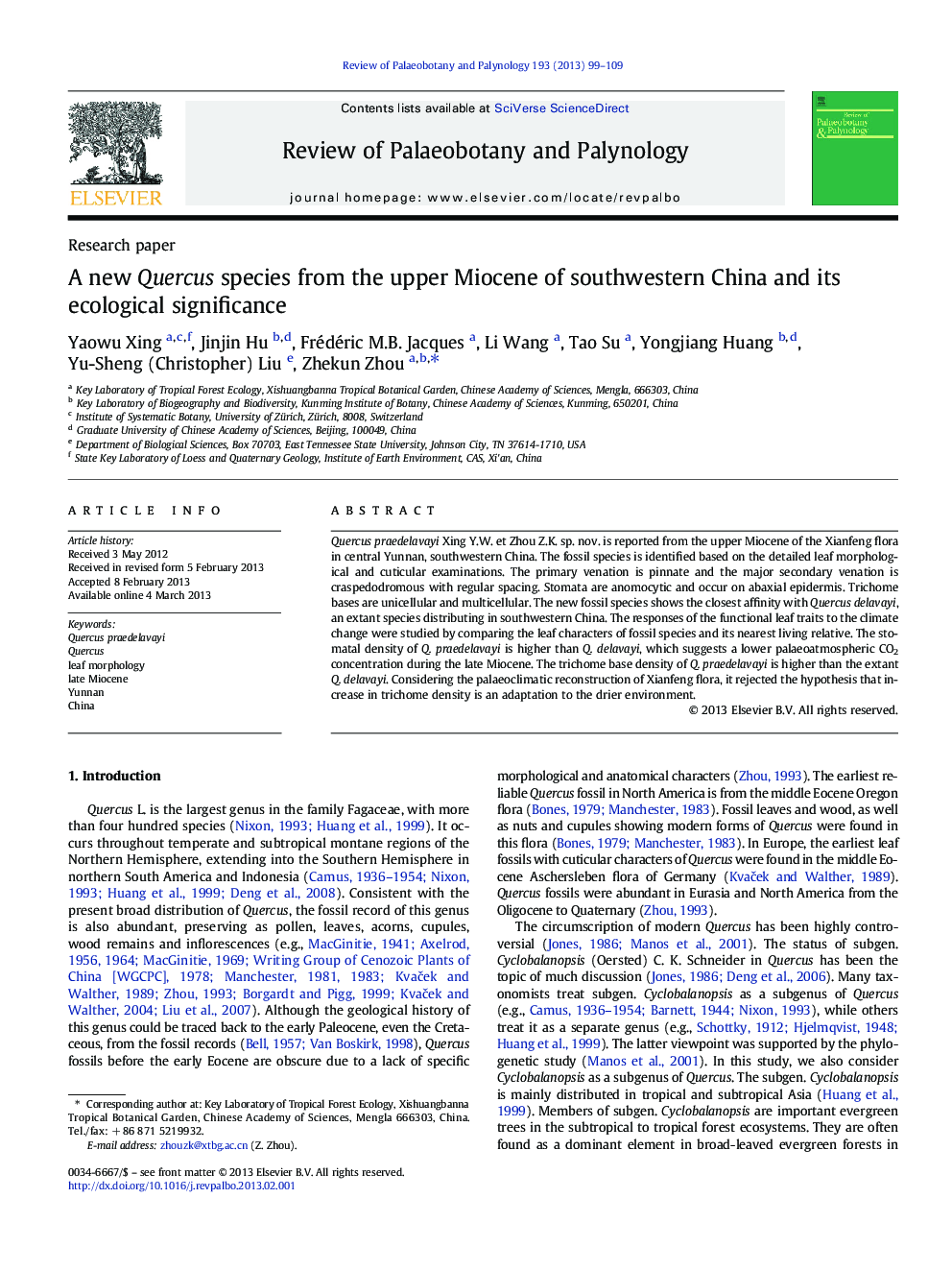| Article ID | Journal | Published Year | Pages | File Type |
|---|---|---|---|---|
| 4750458 | Review of Palaeobotany and Palynology | 2013 | 11 Pages |
•A new Quercus species is described based on leaf morphology and cuticle feature.•The higher stomata density suggests a lower CO2 during the late Miocene.•The higher trichome density is not an adaptation to drier environment.
Quercus praedelavayi Xing Y.W. et Zhou Z.K. sp. nov. is reported from the upper Miocene of the Xianfeng flora in central Yunnan, southwestern China. The fossil species is identified based on the detailed leaf morphological and cuticular examinations. The primary venation is pinnate and the major secondary venation is craspedodromous with regular spacing. Stomata are anomocytic and occur on abaxial epidermis. Trichome bases are unicellular and multicellular. The new fossil species shows the closest affinity with Quercus delavayi, an extant species distributing in southwestern China. The responses of the functional leaf traits to the climate change were studied by comparing the leaf characters of fossil species and its nearest living relative. The stomatal density of Q. praedelavayi is higher than Q. delavayi, which suggests a lower palaeoatmospheric CO2 concentration during the late Miocene. The trichome base density of Q. praedelavayi is higher than the extant Q. delavayi. Considering the palaeoclimatic reconstruction of Xianfeng flora, it rejected the hypothesis that increase in trichome density is an adaptation to the drier environment.
